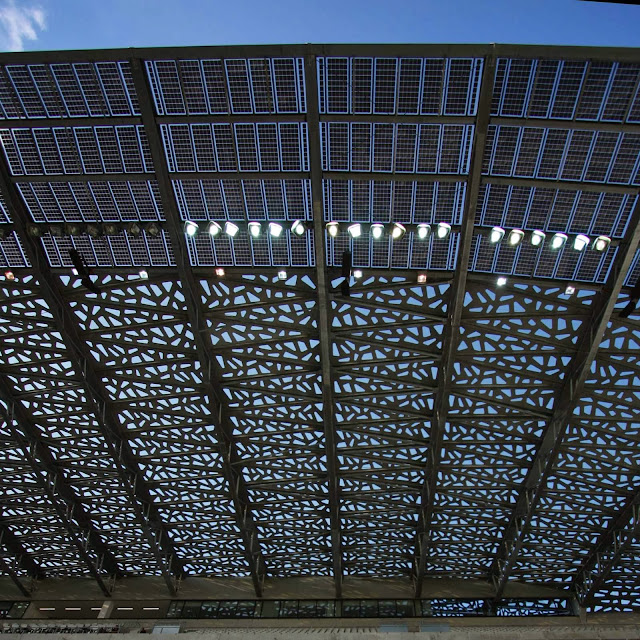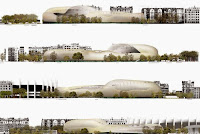Since 1925, the Stade Jean Bouin has played an important role in the history of rugby as well as one of its legendary teams – the Stade Français.
In a residential district with three of the largest sports facilities in Paris (Roland Garros, Parc des Princes and Stade Jean Bouin), the challenge faced by designer Rudy Ricciotti was to “tackle a massive architecture project while steering clear of a violent impact on the urban landscape.”
The result is a remarkable, totally asymmetric envelope, undulating in three dimensions so that “the structure is suggested and the ultra-high performance concrete envelope contains the edifice, much like skin around a body,” says its architect.
“The only way of creating the two curves in this sheet was using a triangular mesh,” explains Romain Ricciotti, co-founder of Lamoureux Ricciotti Ingénierie, the structural engineering firm responsible for the project.
The 23,000 m2 envelope, including a 12,000 m2 roof, is made of 3600 self- supporting Ductal triangles, each averaging 8m to 9m long by 2.5m wide and 4.5cm thick.
On the façade, the panels form a light and porous web, while the roof design is simplified to permit spaces in which to house protective and light-diffusing glass.
Although this combination of glass and ultra-high performance concrete (UHPC) makes the project very original, it presented new technical challenges in order to construct a watertight envelope that would cover the stadium’s entire surface area (excluding the playing field).
The panels, manufactured by French precaster, Bonna Sabla, at a rate of 18 per day, were delivered to the site as needed and installed in a very precise order, then attached to the beams of the metal framework, using ball-and-socket attachments able to withstand wind forces.
Sound insulation was also the subject of careful study. The geometric characteristics of the stadium and the curve of the stands are designed to channel sound towards the spectators, ensuring a festive atmosphere inside the grounds as well as comfort for local residents.
The architect’s work was entirely guided by respect for the urban environment. “The transparency resulting from the cellular latticework generates a dialogue between the sports complex and its environment. By casting off enclosed spaces and totally opaque walls, our proposal emphasizes social bonding and elegance,” Rudy Ricciotti declared when his bid was submitted.
Location: Avenue du Général-Sarrail, Paris, France
Architect: Rudy Ricciotti
General engineering: Berim
Framework engineering: ALT o Group/Marc Malinowsky
Structure and envelope engineering:Lamoureux Ricciotti ingénierie
Framework: Cabrol
Precaster: Bonna Sabl
Contractor: Leon Grosse
Area: 23,000 m2
Year: 2013
Client: City of Paris (heritage and Architecture Department)
via Ductal






















